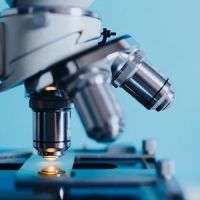Technology keeps advancing rapidly that manufacturers of medical devices are always on the lookout for tech developers who can help them to improve their products and boost revenues. These kind of alliances between medical device companies and tech partners, experts say, actually began some five years ago. One of the more notable collaborations is the one between Philips and Amazon, who worked together to unite medical device, application and electronic medical record data in the cloud.
"Partnerships in the health
continuum bring together an ecosystem of players who can contribute to a final
healthcare solution for customers," according to Maaike van Velzen, head
of IP portfolio management at Philips. "We innovate and cocreate solutions
with partners to improve health outcomes, patient experience and
workflow."
You might also like: Non-compliant and counterfeit medical devices
Of note, this surge in medical device-tech partnerships has resulted in some important problems with regard to patent negotiations and manufacturers' freedom to operate (FTO) for their smart innovations.
IP ownership: main cause of tension
Some negotiations are simply about setting out that each party in the partnership owns what it creates and puts into a new invention, which is often the case when the other business does something very different to medical devices. The problem is when the companies working together have fairly similar business models and inventions are developed jointly.
"In those cases both parties have to ask, who will own the invention? Will it be jointly owned?" says a senior IP counsel for a global device company. "Does each party have the right to commercially exploit the invention without paying money to the other side?"
Other IP experts offer these tips on making negotiations: IP ownership matters should be worked out before both companies commence a project; develop a level of trust in exchange of know-how and making inventions together; and find the right partner – one that has a similar culture and shares a desire to innovate and improve the end-user experience.
Protection analysis
Another challenge for medical device companies is working with third parties to determine the best protection strategy for the jointly-made new inventions on an increased scale. Some entities like to protect inventions with trade secrets, other with patents and others yet with a combination of the two. One expert says that, similar to IP ownership, working out protection preferences should be done ahead of time.
Companies must also work together to determine if an invention is likely to be seen as obvious by a patent office. The same expert points out that a lot of tech going into medical devices now, such as sensors, are already used in consumables and wearables. "Many of the implants we’re creating are brand new, but have been out for years and the combination of the implant and these technologies could be seen by patent offices as fairly obvious," he says. "Perhaps it is not obvious and the tech is more difficult to create than meets the eye. But we should consider that some of the tech may be better protected by trade secrets, nonetheless."
Pumping up FTO
With the entry of new tech players into the medical device market, device manufacturers now have to expand their prior art searches to ensure that they have freedom to operate for their new inventions. "The Apples and Googles of this world are moving into the industry and it may get crowded in regards to patents being filed," notes Franz Wittwer, senior innovation manager at medical device firm Biotronik.
Since medical device companies incorporate tech into their products or build new tech-based innovations, they may need to consider whether they’re infringing patents in other industries. Certain enhancements to the touch screen for an ultrasound machine, for example, could already have been developed and protected by another company for a driverless car.
The senior IP counsel for a global medical device firm explains that his company is diversified in terms of its products. The company will only sell a few thousand systems a year of a particular version of an ultrasound system. Thus, the damages that could be sought for infringement of a particular component of that system would be quite small, he adds.
Source: Managing IP


























